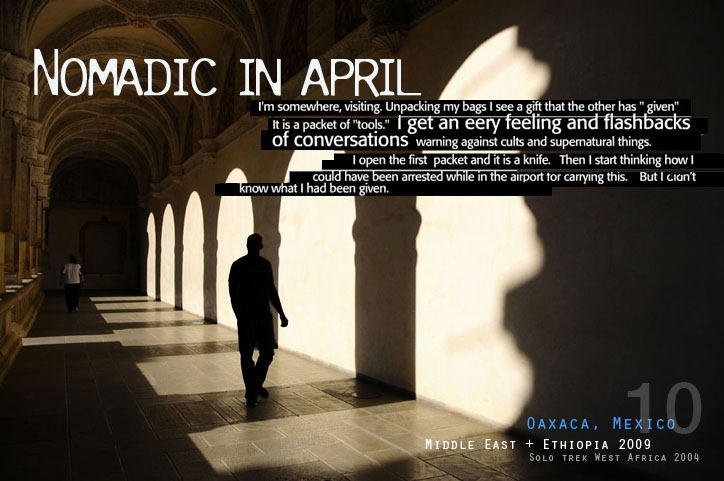Dogon Villages
The first day we left Bankass early. Adding to my modes of transport, we climbed aboard a horse drawn 2-wheel cart which would take us to the first village. We plodded slowly along the long flat road. I wondered at times if the horse was going to make it. Mostly, I was just happy to be out in the open air. It was hot! So hot, like hot I have never felt. In the valleys and lowlands you can see for miles. During this, the rainy season, there is green everywhere. Millet, the main crop, is tall, green and nearly ready for harvest. There are patches of green brush and long wispy grasses dotted across the sandy landscape. Baobab, mango and bissap trees are green and leafy. Occasionally we would see children and woman walking along the road with bails of twigs on their head and cattle grazing in the grasses. But mostly there was no one in site. Quite a contrast from most of the place I had just visited.
Each day we hiked to two villages. In the morning, after a breakfast of limp french bread and instant coffee, we'd start hiking around 7am. By 11 am we'd stop for lunch and rest until 4 pm, waiting for the heat of the day to pass. From 4 to 6 pm we'd hike to the village where we would sleep for the night.
The first day was pretty slow and easy. The terrain was flat and sandy.
After getting off the horse cart, we walked into the first village to see a mud/rammed earth mosque that is typical for this region. We passed a group of elders sitting in the shade of a trellis. This would be my first opportunity to offer the tourist gift of kola nuts. The elder men and sometimes woman in these villages chew the reddish orange kola nut for its stimulant. As a gesture of respect and offering, visitors present one or two kola nuts to all elders they encounter. I carried a sack of nuts that was about the length of my arm from elbow to wrist. Though not particularly big, the space in my day pack was limited. It was already filled with my two cameras, mosquito net, sleep sheet and water. I left my large bag back at base camp.
As we walked into the first village, my guide tried to teach me a few simple Dogon greetings. I couldn't seem to remember anything. Was it the heat? It didn't seem to matter because my simple two word greeting was drowned out by the long greeting that unfolded like a syncopated call and response.
Seyoma?
-seyo
Gineh Seyom?
-seyo
Deh Seyom?
-seyo
Na Seyom?
-seyo
Ulumo Seyom?
-seyo
Awa
Popo
To me it sounded like a chorus of seyo seyo seyo seyo. . .bouncing back and forth between my guide and nearly everyone we passed. The greeting itself takes about 10-12 seconds, so if you are passing someone, both parties slow down or stop so that they are still within hearing distance when the greeting is complete. The greeting is asking "how are you? How's the family? How's your father? How's your mother? and so on. . .the person answers "seyo" which means "fine." This is said if your family is fine or even if your mother is sick. After the greeting is finished, then you discuss the real conditions. I couldn't help but think what life would be like if we at home engaged everyone we saw this way. Although the greeting is definitely a formula, people seem genuinely happy to see one another. You can see people's face light up when it is someone closer to their family. And often men would shake hands and/or hug. Children would stop and stare at me. If I smiled and waved, they would smile from ear to ear and wave "Ca ba!" Translated: ca va. They know to speak french when they see an outsider! Is she African? The old men would ask my guide. He would say "no, she's americaine noire."
My guide is from the village Ende. The second day we reached Ende as a magnificent storm was flashing in the distant sky. It was too hot to sleep inside, but the huge raindrops began to fall sporadically and there was no choice but to go inside. Because of the Harmattan winds, most campements are built with rooms that have no windows, only a door. My room was dark and hot and by the light of the lantern, I could barely make out the images painted on the wall. I sat with the door open and watched the storm. Every few minutes lightening would flash across the sky and give me a mometary glimpse of the room. Just outside the courtyard was a tree that was crammed full with bright white egrets. Everytime the lightening flashed, i could see the black silhouette of the baobab tree covered in little white creatures. It was a very strange sight, like blinking and staring at a strobe light. Am I dreaming? No I am awake. Eventually the rain came. It pelted and poured. But still I kept my door open. I couldn't imagine sleeping in this dark windowless sauna of a room. No, I'd rather deal with any creatures that might find their way into my room.
The next morning, we rose and made a short hike up into the cliffs to see the houses of the Tellem people who proceeded the Dogon.
Tuesday, September 21, 2004
Subscribe to:
Post Comments (Atom)


No comments:
Post a Comment